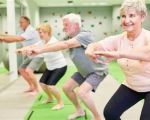- 1-Importance-Of-Gym-Workouts-For-Running-Endurance
- 2-Key-Exercises-To-Boost-Endurance-In-The-Gym
- 3-How-Strength-Training-Complements-Running-Endurance
- 4-Developing-A-Balanced-Endurance-Workout-Routine
- 5-Real-Life-Success-Stories-Of-Improved-Running-Endurance
- 6-Where-To-Find-The-Best-Fitness-Resources-And-Products
1. Importance of Gym Workouts for Running Endurance
Building running endurance isn’t solely about logging miles on the track or treadmill. Incorporating targeted gym workouts plays a crucial role in enhancing your stamina, speed, and injury resistance. Gym workouts for improving running endurance focus on strengthening muscles, improving cardiovascular efficiency, and increasing overall body resilience.
Endurance running demands sustained energy output and muscular endurance. Without proper conditioning, fatigue sets in quickly, limiting performance. Gym training helps address muscle imbalances, build core stability, and improve the efficiency of your running gait.
Understanding the synergy between gym workouts and running can transform your training outcomes, helping you run longer distances with less effort.
1.1 Physiological Benefits
Resistance and cardiovascular training in the gym enhances mitochondrial density, aerobic capacity, and muscular endurance—all vital for sustained running performance.
2. Key Exercises to Boost Endurance in the Gym
Effective gym workouts for improving running endurance should target key muscle groups and energy systems. Some essential exercises include:
2.1 Squats and Lunges
These compound movements strengthen quads, hamstrings, and glutes, critical for powerful and efficient strides during running.
2.2 Deadlifts
Deadlifts build posterior chain strength, improving hip extension and reducing the risk of lower back injuries common in runners.
2.3 Core Workouts
Exercises like planks, Russian twists, and leg raises improve trunk stability, enhancing balance and running posture.
2.4 Cardiovascular Intervals
Using equipment like rowing machines or stationary bikes, interval training improves cardiovascular endurance and recovery speed.
3. How Strength Training Complements Running Endurance
Strength training increases muscular endurance, allowing muscles to resist fatigue during prolonged running sessions. It also improves neuromuscular coordination, leading to better running economy.
Additionally, strength training helps in injury prevention by strengthening connective tissues and correcting biomechanical inefficiencies. By lifting weights strategically, runners can support their endurance goals effectively.
Proper periodization ensures strength training complements rather than detracts from running volume and intensity.
4. Developing a Balanced Endurance Workout Routine
To maximize results, combine endurance runs with gym workouts targeting strength, stability, and cardiovascular capacity. A typical weekly routine might include:
- 2-3 days of resistance training focusing on lower body and core
- 2 days of interval or tempo cardio sessions in the gym
- 3-4 running days with varied distances and intensities
- Active recovery and flexibility exercises
Tracking progress and listening to your body ensures sustainable improvement without overtraining.
5. Real-Life Success Stories of Improved Running Endurance
Jessica, a recreational runner, struggled to finish half-marathons without exhaustion. After integrating gym workouts focused on leg strength and core stability, she shaved minutes off her race times and felt stronger throughout.
Mark, a seasoned marathoner, added high-intensity interval training on rowing machines to his gym routine. This boosted his VO2 max and recovery rate, helping him achieve a personal best.
These stories highlight how gym workouts tailored for running endurance can yield impressive performance gains.
6. Where to Find the Best Fitness Resources and Products
For runners looking to enhance their endurance through gym workouts, Fitness offers expert advice, quality training programs, and recommended gear. Whether you seek strength training equipment, cardio machines, or coaching support, Fitness provides comprehensive solutions tailored to your endurance goals.
Equip yourself with the right tools and guidance to take your running endurance to the next level.








